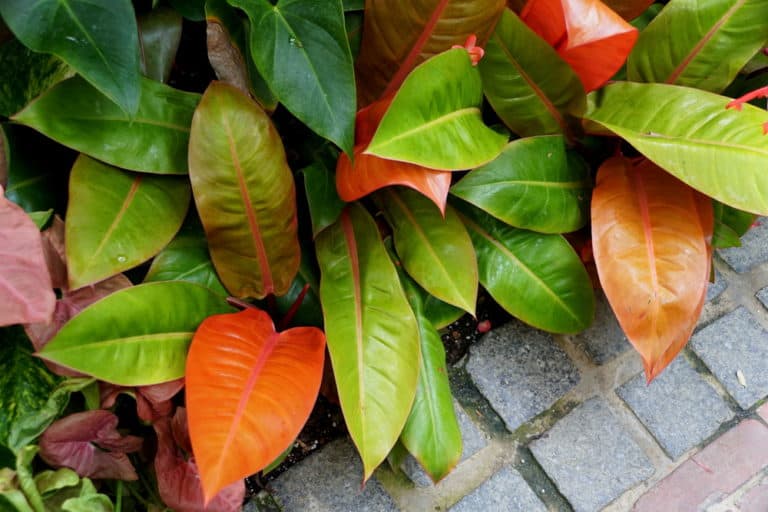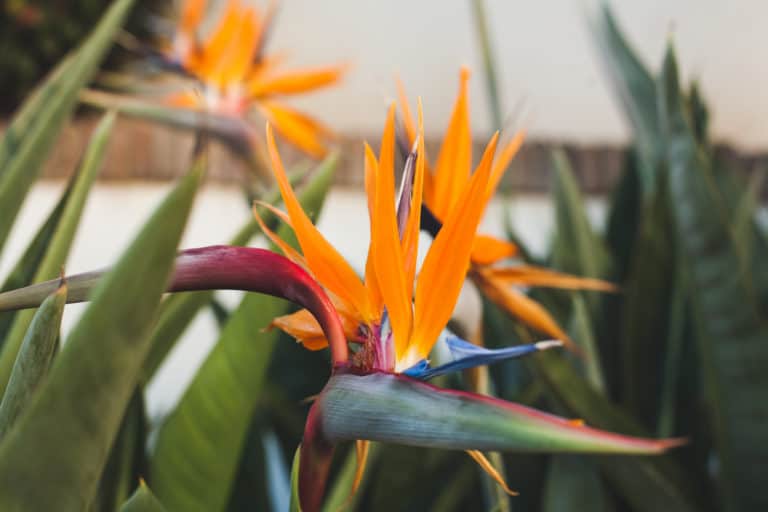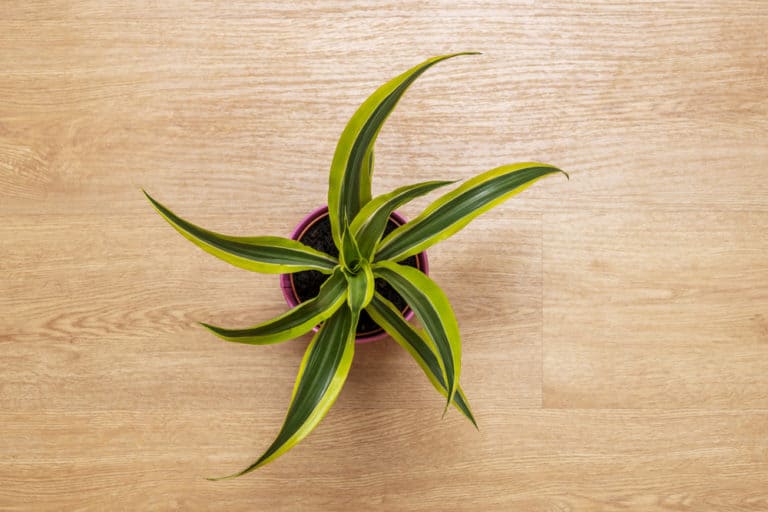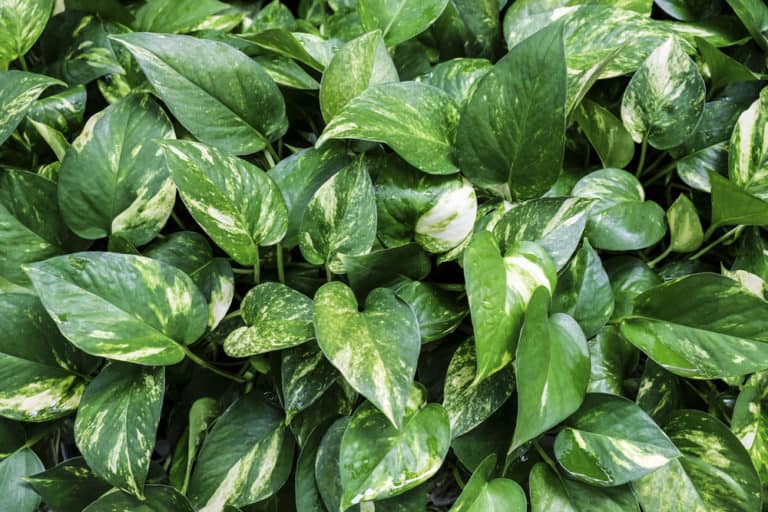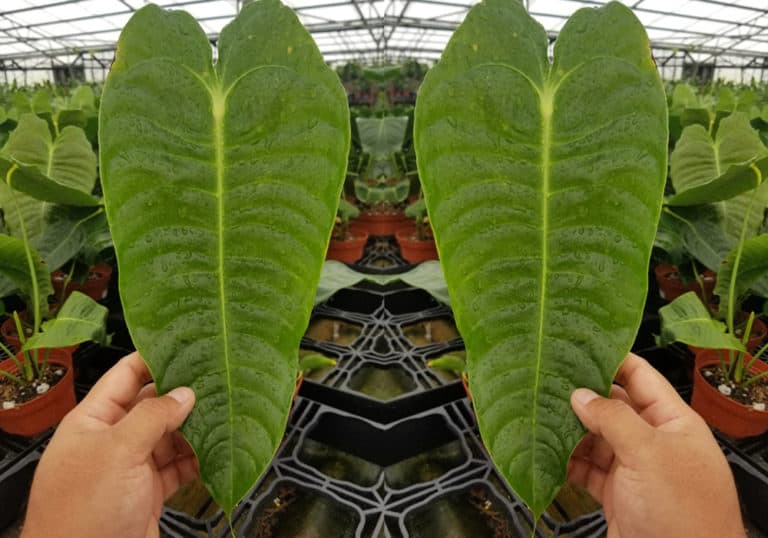Trachyandra Tortilis ‘Ribbon Plant’ Care Guide (2024)
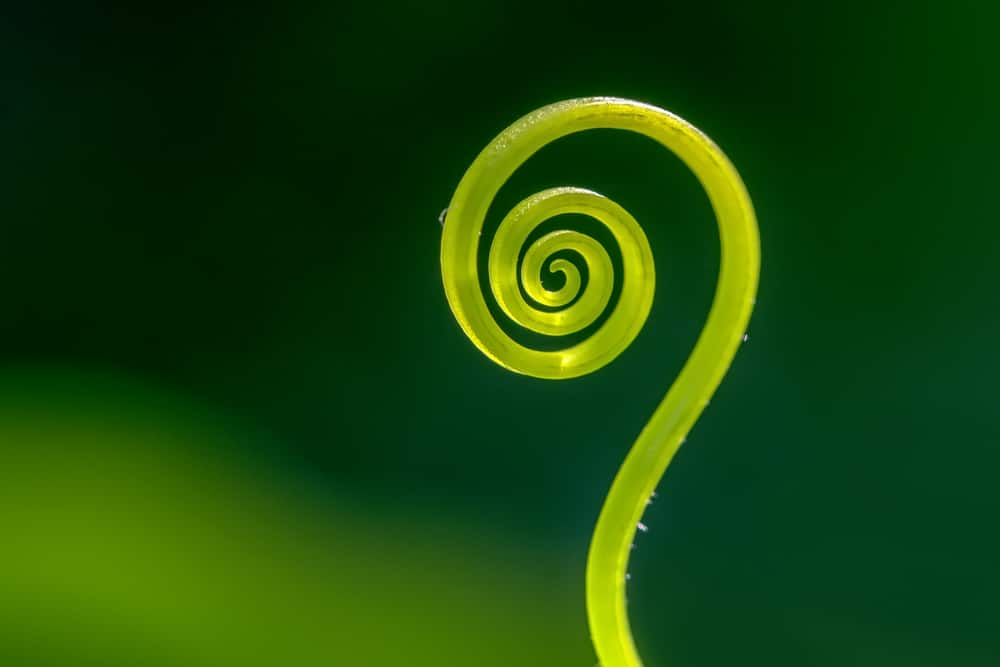
Talking about unique plants, there’s this one succulent species that will surely blow your mind. Scientifically known as Trachyandra tortilis, this plant is definitely a rare gem to find. It has a fancy appearance with its leaves curling up and looking like coils. They’re indeed a sweet treat to the eye.
Plant Profile:
Common Name: Ribbon plant
Scientific Name: Trachyandra tortilis
Type: Succulent
Origin: South Africa and Madagascar
Habitat: Sandy or rocky soils, often in riverbeds and quartz patches
Size: 25 cm (10″) tall
Toxicity: Not poisonous to cats, dogs, or humans
Colors: Green
Blooms: White to gray flowers in late winter and early spring
Plant Care:
Light: Bright, indirect sun
Watering: Low (once a week)
Temperature: 5 – 15°C (41-59°F)
USDA Zone: 9 to 11
Air humidity: Low
Soil pH: Strongly acid (5.1 – 5.5)
Fertilizing: Low requirement
Propagation: Seeds or leaf cuttings
Re-Potting: Every 2 years
Pruning: Root pruning
What’s Unique About Trachyandra tortilis?
At first glance, the Trachyandra tortilis plant seems like an artificial one. It’s curling foliage makes it look fancy and intriguing. You’ll notice that this plant is quite uncommon and is rarely seen in garden stores. You’d be lucky if you ever came across one. It isn’t always available in cultivation either.
Trachyandra tortilis succulent has a longer life span compared to other succulent species. They normally inhabit sandy or rocky soils, often in riverbeds and quartz patches. This amazing plant originates from South Africa and Madagascar. It’s one of the most unique plants you’ll ever find in a collection.
Appearance
Once look at the Trachyandra tortilis appearance and you’ll surely be captivated. Everything about this plant is adorable from its foliage to its flowers. The leaves are either curled, coiled or in a spiral. From the base, a single flower stalk is produced. The plant’s overall appearance looks entirely exotic but certainly beautiful.
Foliage
The foliage of Trachyandra tortilis is it’s crowning glory. It is characterized for having unique leaves. The plant grows as bushy, curling its leaves upward. Others form like coils or spirals. Sometimes, they look like folded ribbons.
When you try to touch the foliage, it has a leathery feel. The color is fresh green. Like most succulents, these stunning leaves have the ability to store more water than other plant species. Thus, they’re almost drought tolerant.
The peculiarity of the Trachyandra tortilis shape is what makes it a huge attraction especially when placed indoors. It’s one of the best foliage plants to display at home.
Flowering
We know that the foliage of this succulent plant is already stunning. But, wait until you see the Trachyandra tortilis flowering. During late winter to early spring, the plant produces a white to gray flower from a single erected stalk. Look closer and you’ll notice a subtle pink color in the flowers.
The bloom adorns the entire plant as if a princess sitting on her throne. Its appearance, however, is short-lived. The flowers last only for less than a day. So, make sure to be on guard so you’d be able to catch the Trachyandra tortilis blooming just in time.
Size and Growth
Are you wondering how big this succulent can grow? Well, no need to worry if you have a limited space. The size of Trachyandra tortilis can only reach up to 25 cm (10 inches) tall. Its basal leaves could grow to a size of 10 cm (4 inches) in length.
Relatively, this plant species is a bit smaller. Therefore, they are best potted in small and cute containers. The Trachyandra tortilis growth rate is also slow. So, it’s reasonable to keep it compact. The good news, though, is that it has an unusually long life span. You have the chance to enjoy this plant as much as you can.
Fragrance
Are you wondering about the Trachyandra tortilis fragrance? Here’s a tip to know ir. Wait for the blooms to arrive in late afternoons of May to September. These months are the flowering season. Try to sniff a flower or two and you will notice that they are sweetly scented. The foliage, on the other hand, does not emit any odor.
Regardless, the plant is still stunning even with or without the fragrance. The scented flowers are just an added bonus to its attractive appearance. The plant’s foliage alone is already a rewarding showcase. What more could we ask from this?
Toxicity
Sometimes, plants can be cute yet scary at the same time. We’ve heard of many houseplant species having toxic properties and are a real threat to animal and human life. Fortunately, your Trachyandra tortilis isn’t one of them.
In short, there’s nothing to worry about Trachyandra tortilis toxicity. It’s perfectly safe for yourself, your pets, and children.
For Humans
Unlike other succulents, Trachyandra tortilis is quite easier to handle. Well, thanks to its non-toxic properties. The plant isn’t only attractive but is also a non-threat to human life. Whether you touch or inadvertently ingest a portion of it, you’d be safe. It won’t give you serious trouble.
However, we still find it appropriate to handle this plant with caution. This is for the plant’s sake! Use your gardening gloves when you handle them as they’re fragile. And please, keep them away from your children. They might get tempted to make fun of the plant. We don’t want you to be sorry in the end.
For Pets
The same goes with your pets. If you’re a fur mom/dad, or a cat lover, we understand you’re extra careful in choosing which plants to add to your home. We can guarantee that Trachyandra tortilis is a safe choice.
Your babies will be fine even if they happen to ingest a portion of the plant. It does not contain compounds that can irritate or harm them. There’s no need to call the vet, certainly. And you need not to panic.
But of course, don’t allow your naughty pets to get near this rare plant. Or else, they might tear them off into pieces as they play. What a nightmare it’ll be!
Suggested Uses
Growing Trachyandra tortilis is like an investment. And it’s a good one! We’ve mentioned earlier that this plant is a real gem. We know that rare plants always have greater value attached to them. If you have the opportunity to get your hands on this succulent, don’t let it go.
This is best kept as a houseplant to accentuate a particular space in your home. It would also make a good office plant. It’s the perfect decoration to a bare table, making the best centerpiece. If you have an existing collection of succulents and cacti, make sure to add this one.
Trachyandra Tortilis Care
It might be a little hard for beginners to care for this rare plant. Although care for Trachyandra tortilis isn’t rocket science, it’s a bit tricky. Some succulents can look extremely vigorous this day, and then, they’ll start perishing tomorrow.
So, here we are to help you find success with this plant.
Light
Plants need sunlight to make food. There are different preferences when it comes to what light condition is ideal depending on the species. The Trachyandra tortilis light requirements aren’t difficult to achieve. All it needs is a bright light with indirect exposure to it.
You can easily manipulate this condition by bringing your plant indoors. Find a south-facing window and place your succulent there. A sheer curtain will help provide partial shade when necessary. This is helpful when the light intensities are too strong.
If your place receives less sunlight, might as well provide artificial light sources. This will aid the plant to keep growing.
Watering
The easiest way to kill succulents is to overwater them. Now, you’ve been warned! Watering of Trachyandra tortilis needs to be properly regulated. We know it’s tempting to pour water on the soil especially when it’s getting a little dry. But, your plant would rather prefer a dry soil.
The technique in watering is simple. Just implement the soak and dry method. Once the soil gets dry, water it thoroughly until it’s fully drenched. After draining excess water, you can bring the plant back to its location. You have to wait for the soil to dry in between waterings.
Temperature
Another important factor to consider in Trachyandra tortilis care is the temperature. Make sure your area has a prevailing temperature that’s ranging between 5 – 15°C (41-59°F). Locations under USDA Hardiness Zones 9 to 11 have a favorable climate for growing this species. If you live in one of these areas, you’re lucky.
Extreme temperatures, especially the colder ones, would seriously harm your Trachyandra tortilis. Your plant isn’t frost hardy. It’s important that you keep an eye on the fluctuating temperatures.
If the cold temperature persists for a long time, provide insulation around your plant. This keeps the plant warm and protected from frost damage. Maintaining the best Trachyandra tortilis temperature will increase chances for long-lived survival.
Air Humidity
Low to medium levels of humidity is most preferred by Trachyandra tortilis. No wonder because succulents wouldn’t appreciate getting extra moisture from its surroundings. As much as possible, keep the Trachyandra tortilis humidity to a low level. It would make sense if you’d keep them away from your tropicals.
This plant doesn’t easily lose water and it has enough reserve to last during the dry conditions. This is the reason why they won’t need additional misting. In fact, it thrives even more in an arid environment. So, make sure to find a location with low humidity level to grow Trachyandra tortilis without so much trouble.
Soil
A special potting mix that’s intended for succulents and cacti is just right. The most important thing about the Trachyandra tortilis soil is that it should drain well. The mixture must be porous in structure and well-aerated.
Also remember that this succulent particularly loves strongly acid (5.1 – 5.5) soil. Adding in peat moss could help lower the pH of the soil mix. You can measure this out using a handheld pH meter.
Maintaining proper pH is important because it determines the availability of nutrients for the plant’s consumption. The right potting mix helps the plant achieve its optimum growth.
Fertilizing
Fertilizer isn’t much needed by Trachyandra tortilis. It’s one of those plants which doesn’t need a regular supply of nutrients. Even when the soil is less fertile, this succulent would still live healthily.
If you wish to fertilize your succulent, you can use a balanced fertilizer. Dilute it to half of its original strength before pouring onto the soil. It will help your succulent grow lush foliage. However, we suggest that you do this only when it’s necessary. Don’t get addicted to fertilizing your Trachyandra tortilis.
Propagation
Don’t miss out the chance of propagating this exotic plant once ready. We told you, it’s a great investment. Propagation of Trachyandra tortilis is possible through seeds, and leaf cuttings.
Growing this plant from seeds is a tough and time consuming job. It takes a few weeks for the seedlings to emerge. And even after transplanting, there’s a need to wait for a year until it reaches an aesthetically desirable size. But of course, there’s no harm in trying.
As an alternative, you can cut mature and vigorous leaves from the mother plant. Let those cuttings sit for a few days allowing them to callus. Then, plant it in potting soil and water thoroughly.
Re-Potting
Since the plant is a slow-grower, it would take at least 2 years before it would require repotting. Most succulents prefer to be pot bound. Trachyandra tortilis also likes the same.
Re-potting Trachyandra tortilis should take place once the plant has started outgrowing its pot. You can take it out of its current container. Shake off the potting soil. Check and trim the roots if needed. Then, plant it anew in a larger pot.
This way, your succulent will have a new home provided with fresh potting soil and enough space for growing its roots. Repotting rejuvenates the whole plant.
Pruning
Due to its unique nature, there’s no need to prune the leaves of your Trachyandra tortilis. Its foliage wouldn’t grow thick anyway. That’s why it’s best to leave them be.
What we recommend is to prune the roots during repotting. You can cut off dead and rotten portions of the root system. This helps give enough breathing room for the healthy roots to grow and flourish. Use sterilized pruning shears to execute this task. We don’t want to transfer diseases to our newly repotted succulents.
Pruning Trachyandra tortilis isn’t a demanding job to do. Your plant would even survive for years without having it.
Trachyandra tortilis Common Problems
Since this plant isn’t the easiest one to care for, we recommend this one for the green thumbs. At least the advanced gardeners are way more experienced in troubleshooting certain difficulties.
The common Trachyandra tortilis problems are discussed below. Some of them may already sound familiar to you. Nevertheless, keep reading.
Pests
Thankfully for Trachyandra tortilis succulent, pests aren’t really a huge problem. This plant won’t get easily disturbed by these tiny organisms. In fact, you’d rarely notice this succulent getting infested.
There are occasional times, however, when mealybugs get on its way to this rare succulent. It can be a little challenging to spot them if they choose to hide under those curls. Thus, we still suggest that you run a periodic check on this plant.
If Trachyandra tortilis pests happen to find residence in your plant, you can swab them off using a cotton ball dipped in alcohol. Do it several times until your plant is pest free.
Diseases
As with most succulent species, root rot is the typical downfall of Trachyandra tortilis. This is caused by overwatering the plant. Once the roots sit in excess water, they suffer from lack of oxygen. This further leads to the death of the roots.
Dead roots are no longer functional. As a result, your plant wouldn’t receive enough nutrients and water from the soil. If this condition persists, the entire plant could even die. To prevent the occurence of Trachyandra tortilis diseases, refrain from giving too much water and humidity.
A consistently damp condition also encourages the growth of pathogens. They could further aggravate the effects of overwatering.
Growing Problems
Growing Trachyandra tortilis plants is almost all the same as tending to other succulent species. The conditions needed by the plant to thrive are pretty much alike. However, since this one is rare and exotic, there’s a need to be extra careful. We don’t want to lose this precious jewel, do we?
If you want your plant to survive, you have to give it tender love, and care. Give enough time to tend to it. Be a dedicated gardener. And make sure to follow all the care tips we’ve specified here. Only those who are truly committed will win the heart of Trachyandra tortilis.
FAQ
What is Trachyandra tortilis?
Trachyandra tortilis is a succulent plant from the Asphodelaceae family. It’s a unique and rare species popular for its attractive appearance. It’s native to South Africa and Madagascar.
The Trachyandra tortilis common name is ribbon plant.
How do you grow Trachyandra tortilis from seeds?
Definitely, yes! If you manage to get hold of Trachyandra tortilis seeds, you can use them for propagation. You wouldn’t want to miss the chance to multiply these beauties.
Is Trachyandra tortilis toxic to cats?
Luckily, this succulent species is totally safe to cats. No need to worry if you have felines at home. Trachyandra tortilis is considered non-toxic and non-harmful even when ingested.

